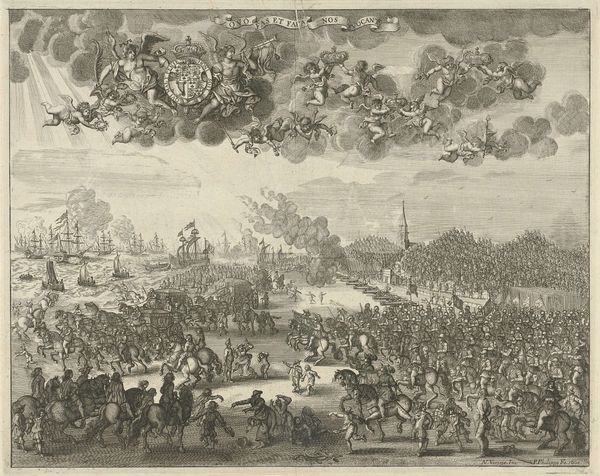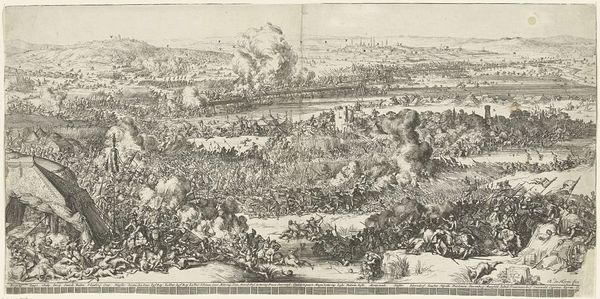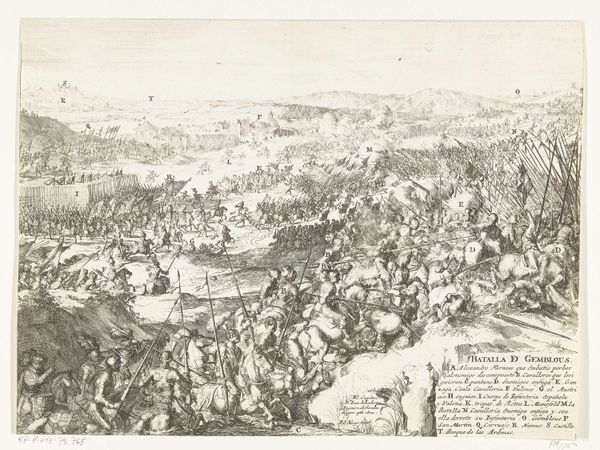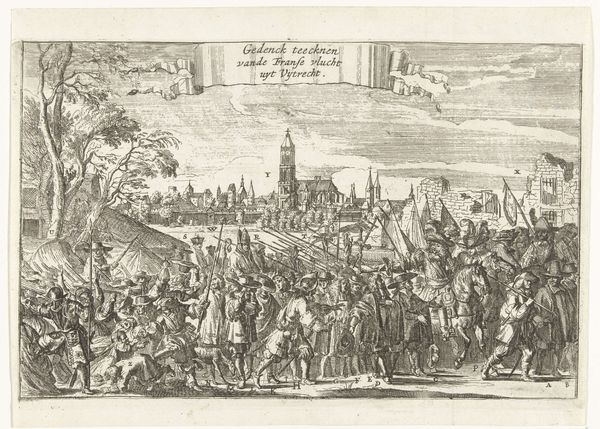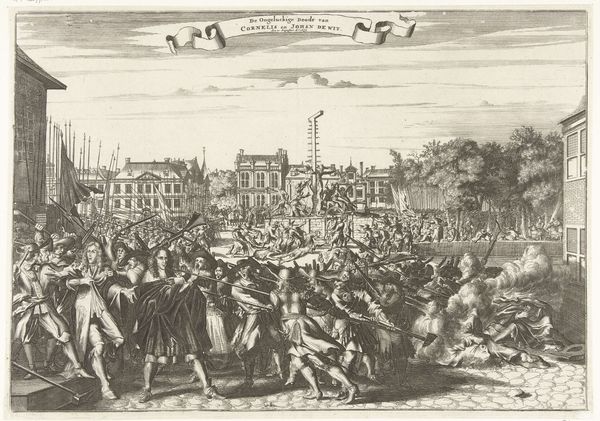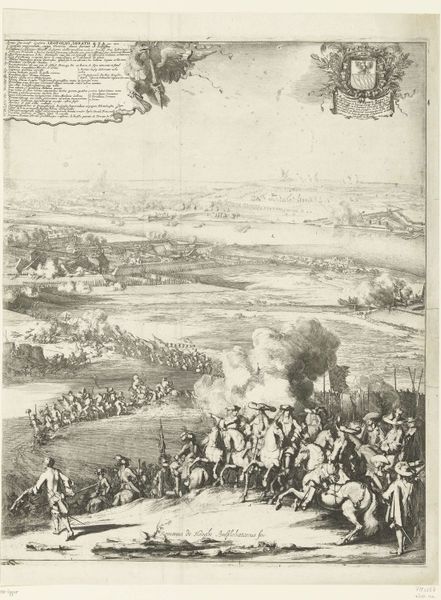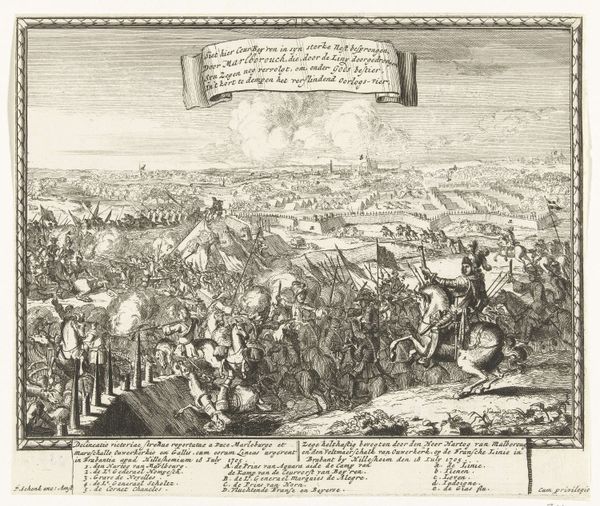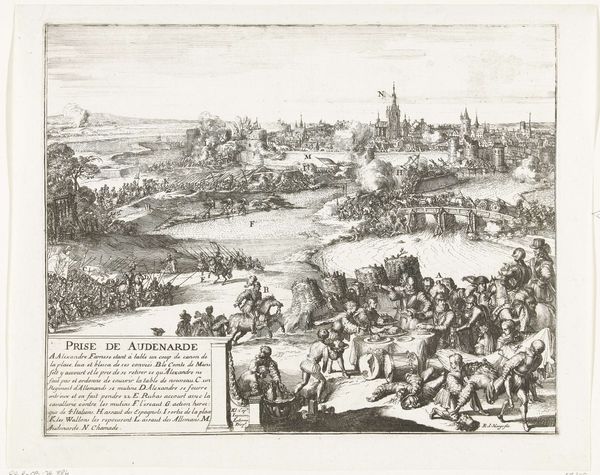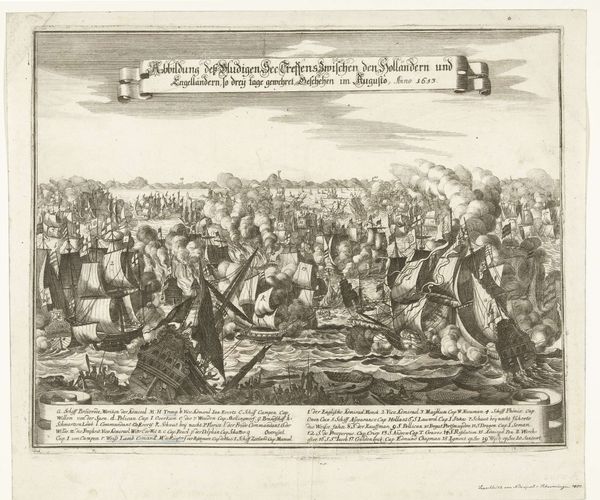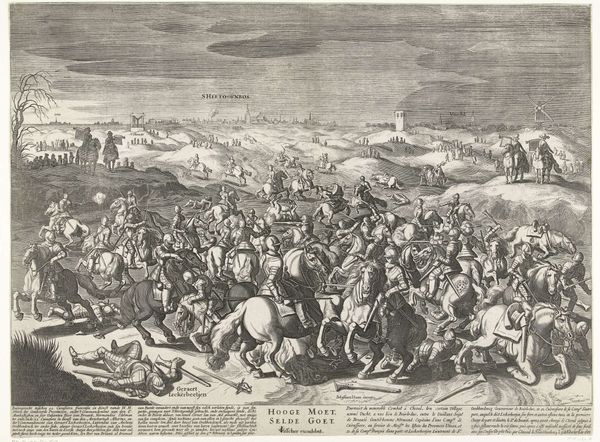
print, engraving
#
narrative-art
#
baroque
# print
#
old engraving style
#
landscape
#
history-painting
#
engraving
Dimensions: height 276 mm, width 345 mm
Copyright: Rijks Museum: Open Domain
Curator: "Slag bij Oosterweel, 1567," made by Romeyn de Hooghe, sometime between 1670 and 1699. What jumps out at you? Editor: It’s incredibly chaotic, right? There are figures sprawling all over, and it feels overwhelming. How do you even begin to interpret such a densely packed scene? Curator: Absolutely, that chaos is central. Given its creation in the later 17th century, consider the context. The print depicts a battle from 1567. De Hooghe likely had his own political motivations. Whose story do you think this engraving is trying to tell? What statements might the artist be attempting to convey? Editor: I see… So, not necessarily a neutral historical record. Maybe he’s glorifying one side or demonizing another? Curator: Precisely. Notice how the city looms in the background, seemingly untouched by the immediate violence. What do you think is being contrasted? What happens to the marginalized populations in that chaos, caught between the battles of nations, empires and rulers? Editor: It's as if he's highlighting the disruption and brutality inflicted upon the Dutch landscape and population under Spanish rule. The chaos is a deliberate commentary on war's impact. Curator: Yes, and think about the enduring impact of historical trauma on identity and nation-building. Can we see parallels in contemporary conflicts and representations of violence today? Editor: That makes me rethink the whole composition, not just as history, but as a political statement relevant across time. Curator: Exactly! Art constantly interacts with the present. Hopefully, this helped show you a bit more of the complexities within this image, its historical moment, and, more importantly, its conversation with modern contexts. Editor: I definitely have a richer understanding now! Seeing it as a form of historical and political argument makes so much more sense. Thanks!
Comments
No comments
Be the first to comment and join the conversation on the ultimate creative platform.
